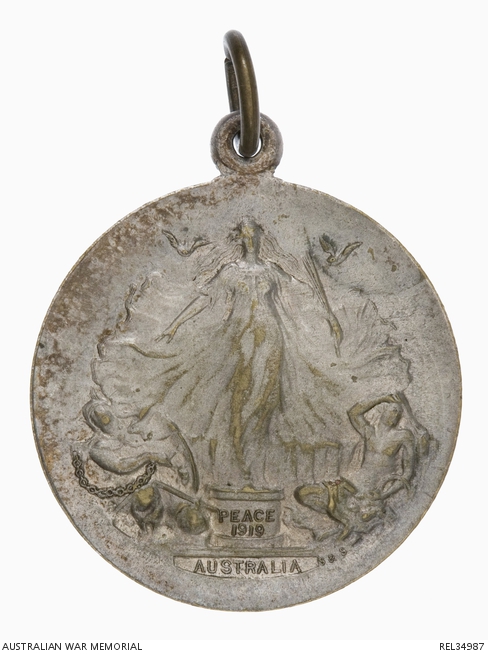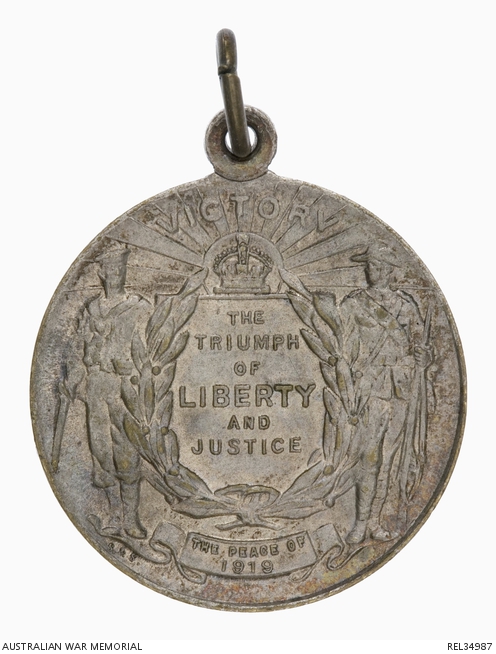| Accession Number | REL34987 |
|---|---|
| Collection type | Heraldry |
| Object type | Medalet |
| Physical description | Silver-plated brass |
| Maker |
Stokes & Sons, Melbourne |
| Place made | Australia: Victoria, Melbourne |
| Date made | 1919 |
| Conflict |
Period 1910-1919 First World War, 1914-1918 |
Peace medalet : Sergeant G E Watkins, 39 Battalion AIF


Circular medalet with a plain edge and integral suspension loop. The obverse features a symbolic female figure of Peace, holding a sword and standing on a plinth marked 'PEACE 1919'. Behind her flies a dove, and at her left and right feet are two figures freed from their shackles. The reverse features a central panel surrounded by laurel leaves, surmounted by the King's Crown with the word 'VICTORY' over the rays of the rising sun. A sailor and a digger stand at ease on either side of the panel on which is cast 'THE / TRIUMPH / OF / LIBERTY / AND / JUSTICE'. Below the leaves is a very small panel with the words 'THE PEACE OF 1919' and the manufacturer's name.
Designed by C Douglas Richardson, 'The Peace of 1919' medalet was issued by the Defence Department to school children throughout Australia to commemorate the signing of the Versailles Peace Treaty in 1919. The medals were originally suspended from a narrow piece of red, white and blue striped cotton ribbon. This medalet is associated with Sergeant George Edgar Watkins. Watkins was born in Malvern, England, and later immigrated to Australia. Watkins enlisted for service in the AIF in Melbourne on 10 February 1916 aged 23 years. He embarked with 39 Battalion for the Western Front in May of that year, serving in the scout section of the battalion. He was promoted to the rank of corporal in August 1917, then to sergeant in May 1918. On 4 June 1918, Sergeant Watkins was awarded the Distinguished Conduct Medal for as 'leader of numerous patrols, he has been the means for securing valuable information in No Man's Land'. During the war, Watkins kept an extensive record of his daily routines and nightly patrols in diaries and also detailed information in the form of notebooks, hand-drawn maps, plus original photographs. Watkins also collected a vast array of artifacts from the battlefield during the war including a German Mauser Model G98 Rifle and a German flare pistol. All are held in the Memorial's collections. At the end of the war Watkins returned to Melbourne to return to his pre war occupation as a painter. He later married a girl he met while on leave in England during the war, and together they raised a daughter. George Edgar Watkins passed away in 1967.